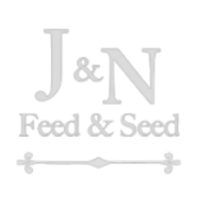 Those used to buying over-the-counter livestock antibiotics at the local feed store will be required, as of June 11, to obtain a prescription before purchase.
Those used to buying over-the-counter livestock antibiotics at the local feed store will be required, as of June 11, to obtain a prescription before purchase.
What is the new rule?
The Food and Drug Administration recommends manufacturers of medically important antimicrobial drugs that continue to be available over the counter and are approved for use in animals, both companion and food-producing, regardless of delivery mechanism, to voluntarily bring these products under veterinary oversight or prescription marketing status.
By June 11, labels of the remaining over-the-counter antibiotics for livestock use will be required to read: “Caution: Federal law restricts this drug to use by or on the order of a licensed veterinarian,” and the purchaser must have a prescription or drug order to buy it.
What antibiotics does this affect?
Prescription-only items will include injectable tylosin, injectable and intramammary penicillin, injectable and oral oxytetracycline, sulfadimethoxine and sulfamethazine, gentamicin, cephapirin and cephapirin benzathine intramammary tubes.
How and where can these items be purchased after the rule goes into effect?
Individuals with veterinary-client-patient relationships, VCPR, may purchase antibiotics directly from their veterinarian or from a distributor with the vet’s prescription.
What constitutes a VCPR?
Three requirements must be met:
(1) The veterinarian has assumed the responsibility for making clinical judgments regarding the health of the animal and the need for medical treatment, and the client has agreed to follow the veterinarian’s instructions.
(2) The veterinarian has sufficient knowledge of the animal to initiate at least a general or preliminary diagnosis of the animal’s medical condition. This means that the veterinarian has recently seen and is personally acquainted with the keeping and care of the animal by examining the animal or by medically appropriate and timely visits to the premises where the animal is kept.
(3) The veterinarian is readily available or has arranged emergency coverage and follow-up evaluation in the event of adverse reactions or the failure of the treatment regimen.
What’s your advice to livestock owners without a VCPR?
Producers who already have a VCPR in place and purchase their animal health products through their veterinary office or through other distributors under an existing prescription system will likely notice little change. However, this may have significant impacts on how the livestock owners can access antibiotic therapy for their animals, so contact your local veterinarian as soon as possible.
Are there any specific instructions that should be given to livestock show exhibitors?
Livestock exhibitors, like all producers in animal agriculture, are responsible for understanding animal treatment regulations. For junior shows, students complete the “Quality Counts” quality-assurance curriculum that stresses the importance of VCPR.
What health/medical items can livestock owners continue to purchase over the counter?
Most vaccines, dewormers, injectable and oral nutritional supplements, ionophores, pro/prebiotics and topical nonantibiotic treatments will not require a veterinary prescription. However, there are some exceptions. Always read the label.
Below is a list of products that are impacted by the new law effective June 11, 2023.
Common Agricultural Antibiotics Requiring a Prescription
Products without new Rx label may be purchased AFTER June 11 without a prescription while supplies last.
Cepharin Based Active Ingredient
- ToDay Mastitis Treatment for Lactating Cows by Boehringer Ingelheim
- ToMORROW Dry Cow Mastitis Treatment by Boehringer Ingelheim
Lincomvcin HCl Active Ingredient
- Lincomycin 300 Swine Injection by Durvet
Oxvtetracvcline Active Ingredient
- Duramycin 72-200 Injectable Antibiotic for Cattle and Swine by Durvet
- Liquamycin LA-200 Injection by Zoetis
- Noromycin 300 LA by Norbrook
- Oxy 500 Calf Boluses by Boehringer Ingelheim
- Terramycin Calf Scours Tablets by Zoetis
- Terramycin Ophthalmic Ointment for Animal Use by Zoetis
Penicillin Based Active Ingredient
- Penicillin G/Norocillin Injectable by Durvet
Spectinomycin Active Ingredient
- SpectoGard Scour-Chek by Bimeda
Sulfonamides L Sulfa Based Active Ingredients
- Albon Cattle Boluses by Zoetis
- Sustain III Boluses by Bimeda
Ivlosin Active Ingredient
- Tylan 200 Tylosin Antibiotic for Cattle and Swine by Elanco
- Tylan 50 Injectable Antibiotic by Elan
Please work with your local veterinarian to obtain a prescription for these products prior to visiting us for these products. Thank you, we appreciate your support.
Source: Texas A&M Extension AgriLife Today
 Thermacell mosquito repellants are a convenient and effective way to keep mosquitoes away while enjoying outdoor activities. Powered by a single AAA battery, the device emits allethrin, a synthetic version of an insect-repelling chemical found in chrysanthemums. This odorless and silent repellent provides users with a safe and easy way to protect themselves from pesky mosquitos without having to apply sprays or lotions.
Thermacell mosquito repellants are a convenient and effective way to keep mosquitoes away while enjoying outdoor activities. Powered by a single AAA battery, the device emits allethrin, a synthetic version of an insect-repelling chemical found in chrysanthemums. This odorless and silent repellent provides users with a safe and easy way to protect themselves from pesky mosquitos without having to apply sprays or lotions.

















